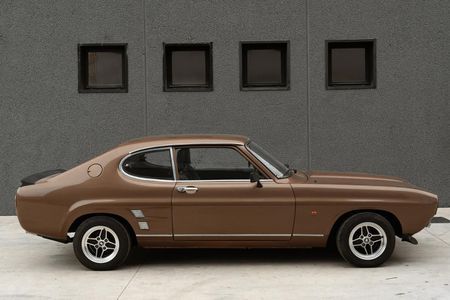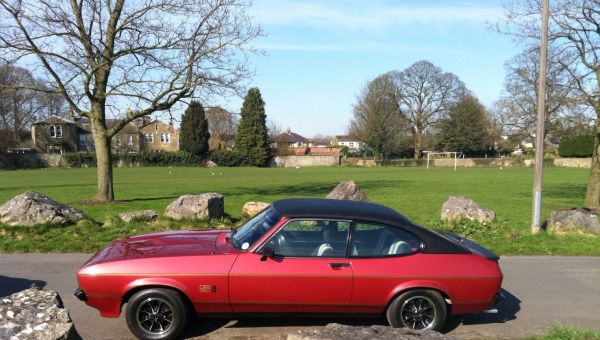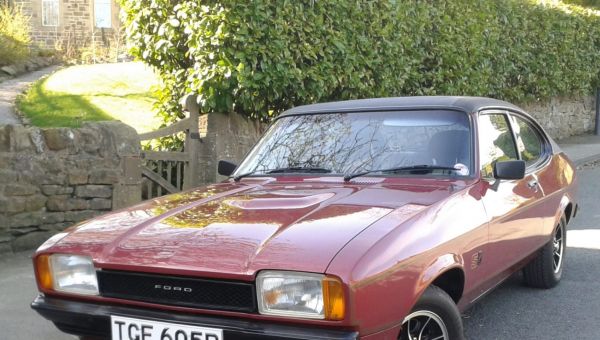However, during those wonderful halcyon days at least my eyebrows had remained stable, never exceeding 6mm or so in length. Nuisance nasal hair was something that only afflicted Woodbine puffing granddads. As for rampant ear hair? Just forget it. That was never, EVER going to happen to me.
Then, of course, I hit my 40's. I quickly learned the meaning of the old adage "be careful what you wish for". Youth wasn't so bad after all.
Sure, in my 40's, my voice became a bit more gravelly. I also became worryingly conversant about the many health benefits associated with eating dried prunes, porridge oats and bran. I was using the term roughage as 'regular' as I clearly aspired to be. As for eyebrows and nasal hair? Suddenly, previously passive follicles became angry little hair ejecting craters. Individual ejector-hair which had for all my days remained at around about that 6mm benchmark suddenly bolted like the crazed weeds on Jumanji. As for ear hair? Well, I've learned that Turkish barbers have an ingenious method of dealing with that problem. It involves the use of flame throwing cigarette lighters. For God's sake, whatever you do, don't try their techniques at home!
Capri
Weird things!
Yes. At age '40-plus' weird things happen. All of a sudden policemen look baby-faced and lady traffic wardens look increasingly attractive. But to cap it all, out of nowhere, I honed a proprietorial interest in a car that had hitherto been of little interest to me since those fresh-faced boyhood days of old. A Ford Capri.
You see, by the time I'd reached 40, the Capri had been out of production for nigh-on 20 years. By this juncture, the Capri had become the preserve of oldish blokes with beer bellies, brown t-shirts and pork chop sideburns. Men who routinely wore rustic fawn leather jackets and studded cowboy hats which always tend to look a bit greasy. The Capri had become a sort of niche car that had built up a cult following amongst divorced middle aged blokes called Pete. A Pete who owns a Capri knows at least a dozen other blokes called Pete who also own Capris, sometimes several of them. That's just the way it is.
Rare treat
I must confess that the sight of a decent, well kept Ford Capri is becoming an increasingly rare treat these days. Especially at a time when so many modern cars have become so outrageously dull. At least the Capri has a bit of style and character. The Capri design was never spat out by a Microsoft ''One size fits all" CAD software programme. And that makes all the difference. OK, nostalgia creeps in as a salient factor when admiring cult cars and this can taint a person's outlook, making it difficult not to slip into an 'old school' mind-set.
The name “Capri” had been around for many years before it came to European shores. It had been used on a number of American Ford models since the 1950's. The first was the 1950 Lincoln Cosmopolitan Capri. In 1952 the name was again used on the Lincoln Capri. Meanwhile, on this side of the pond, the Ford Capri itself wasn’t the first European car to use the name either. That accolade went to the 1961 Ford Consul Capri - which was a sort of fastback version of the Ford Classic.
More exotic
However, all Ford Capris had one thing in common. They were two-door coupés and convertibles. Ford had clearly intended the Capri name to be associated with something a bit more exotic than the norm. A car with a sporty look that hinted towards a bit of devilish performance. Something altogether a bit sexy.
The Capri was created with affordability very much in mind. This was a car bred to inject a spot of sporty motoring prowess into the lives of blue collar workers. Ford therefore resorted to its tried and tested strategy of dipping into a common parts bin in order to source parts and therefore curtail production costs. The development budget for the Ford Capri was £20 million, so it was inevitable that bits and pieces from Ford's existing model range were going to be bolted on somewhere along the line. Many of the Capri MK1's parts came from the Corsair whilst the steering and tail lights were lifted directly from the MK1 Escort.
Genuinely affordable
In 1969, the Capri had an entry level price of just £890. That really did make the Capri quite unusual because it was a genuinely affordable, albeit mass-produced coupé. The model was available with a wide range of engine options, many of which weren’t really at all quick. It's fair to say that some variants were actually depressingly lethargic. But - they all had 'the look'.
The Capri was produced from 1968 to 1986. During its 18 year production run, the brand heralded three generations. The MK1 was made from 1968 to 1973, while the MK II was produced between 1974 and 1978. In March 1978 Ford unveiled the third-generation Capri, which was really just an extensively restyled MK II. This remained in production (in numerous guises) right through to production end in 1986.
British and German Ford factories produced different versions of the Capri. They were powered by different engines. The German-made Capri MK1 had the Ford Taunus V4 engines. Those engines came in 1.3, 1.5, and 1.7 litre variants whilst the British-made cars were equipped with 1.3 and 1.6-litre Kent (inline-four) engines. The wheezy 1.3 (57-hp) cars took a tectonic 23 seconds to reach 60 mph. The top speed was nothing to write home about either at just 84 mph. Ford later introduced a 1.3-litre (60-hp) crossflow as their basic engine. This new edition didn't really improve performance by much but did however provide improved refinement and durability. Ford also introduced 1.6 and 2.0-litre crossflow engines from the American Ford Pinto.
Of course, Capris came with bigger engines too. These cars could easily top 100 mph. Despite the German and British factories turning out their cars with different power plants, both factories produced V6 units for their higher end models. These were the British Essex 3.0 and the German Cologne 2.8's. Increasingly stringent emission regulations meant that the Cologne engines eventually trumped the Essex. The Cologne V6's were thereafter fitted into all of the UK-built top end models and the old Essex units were finally retired.
Alas, after all my years of motoring, I never got to own a Ford Capri. There again, my name isn't Pete and I don't think a leather cowboy hat would actually suit me all that well.
Douglas Hughes is a UK-based writer producing general interest articles ranging from travel pieces to classic motoring.














Aah yes, the Capri. Had my one and only when I was 28, in 1986. An orange 1,6GT MK1, in immaculate condition. I was persuaded to sell to my brother in law by my then wife. He promptly crashed it and it was taken off to the scrap yard.
By Ian from Other on 14 May 2022, 15:31